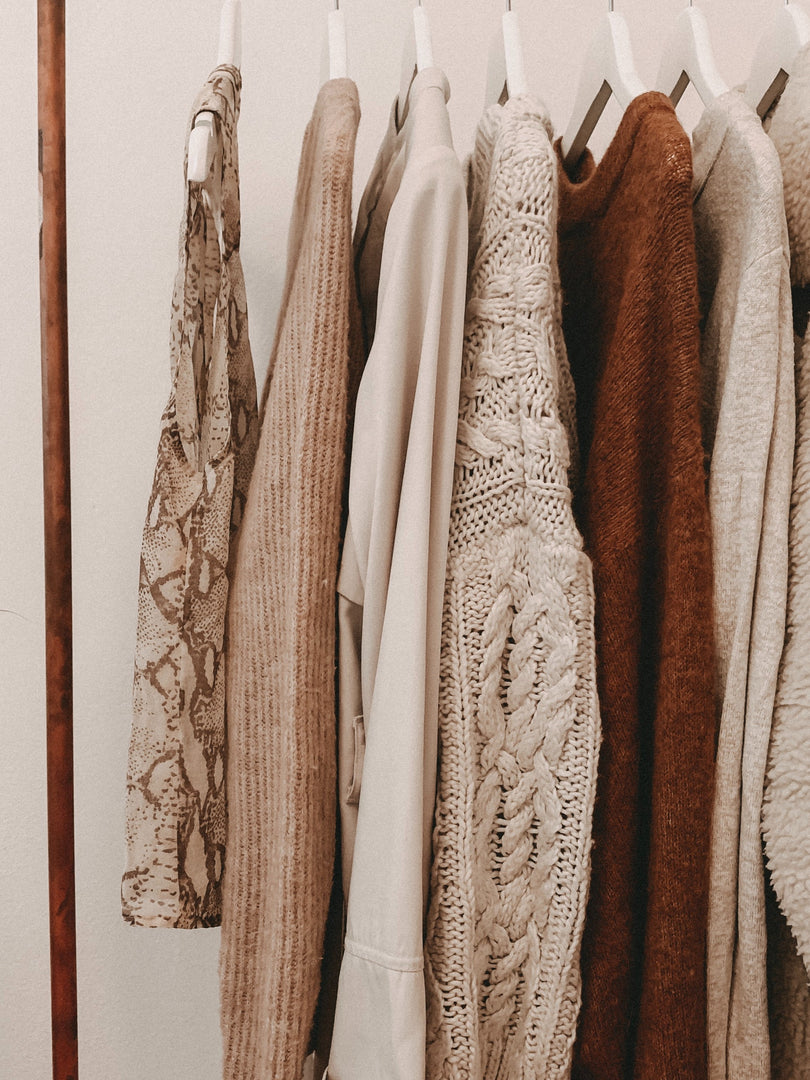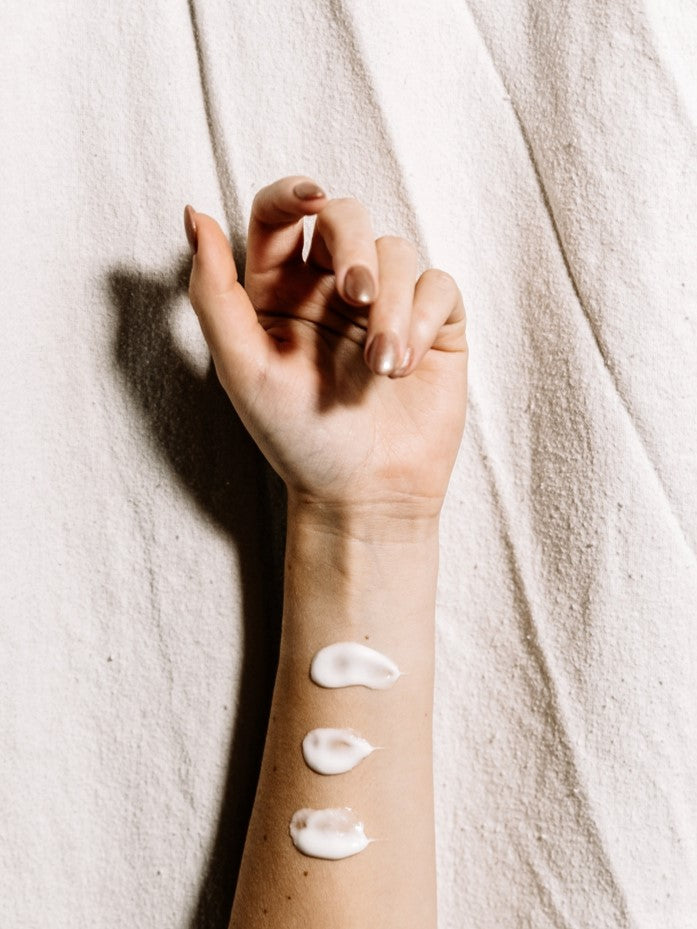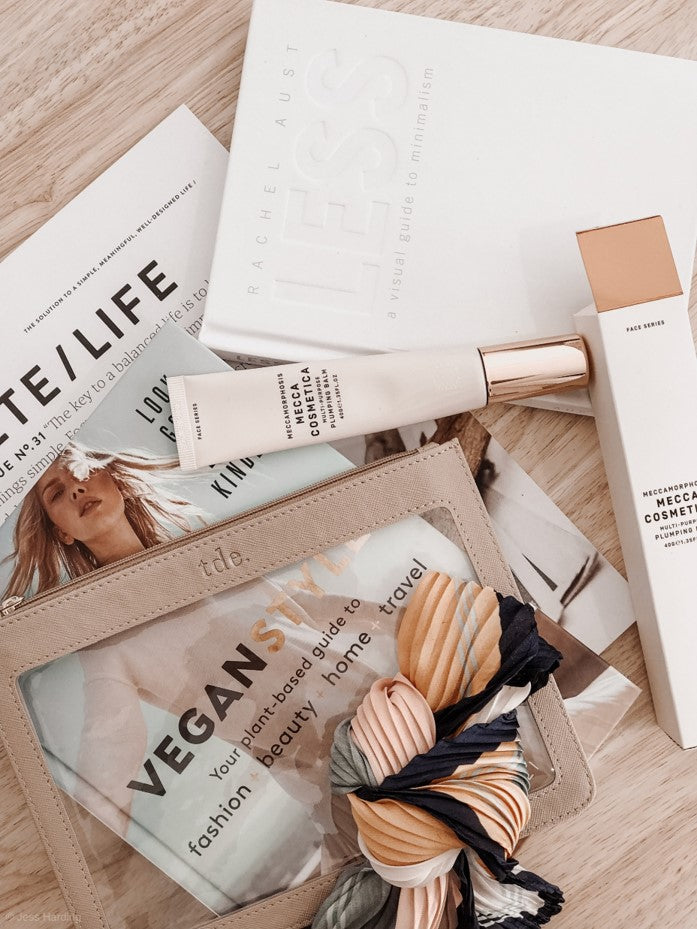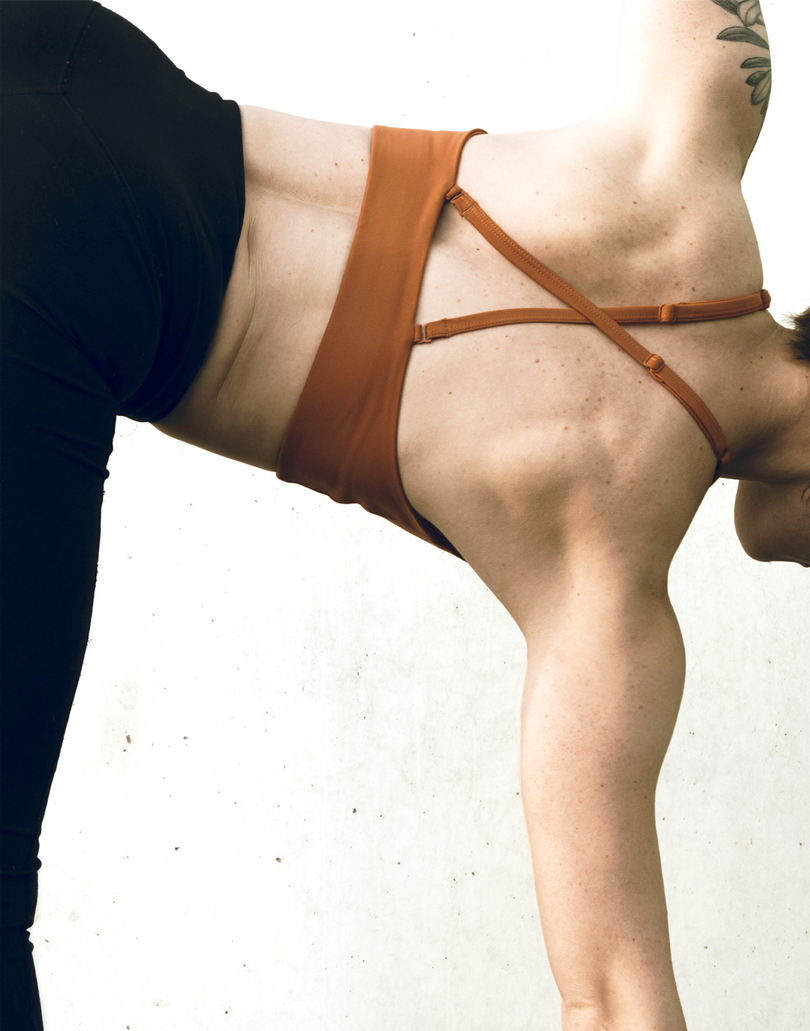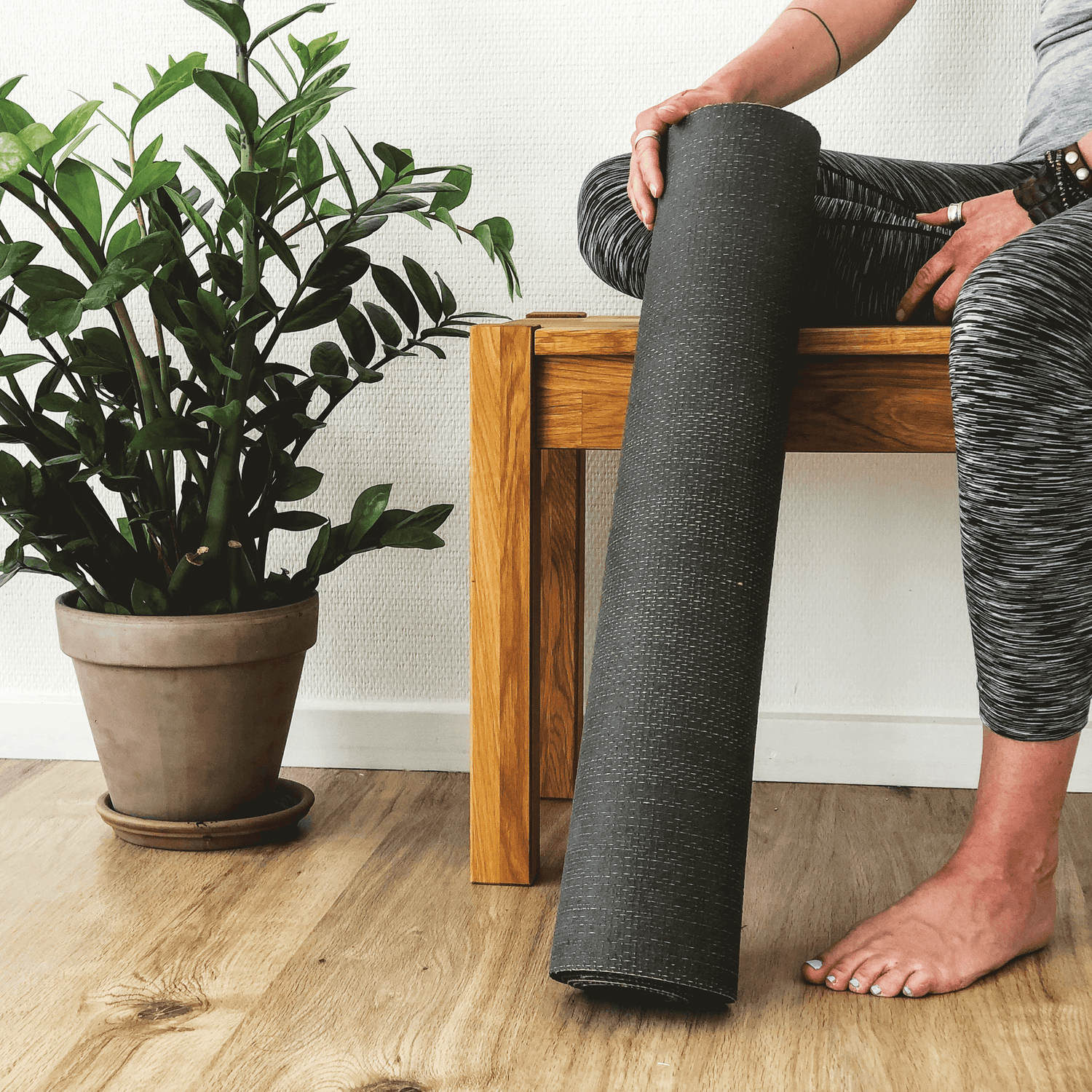Adding nontoxic yoga mats to our yoga routines could help make a significant impact on ourselves and our environment. The love of yoga is shared by over 300 million people around the world and is a calming and soothing technique to practice mindfulness and improve strength and flexibility and our lives overall. Until we realize that the most essential and popular piece of yoga equipment, the yoga mat, is most likely made of PVC and other chemical materials that are damaging to produce and likely dangerous to the yoga practitioner as well. Switching to a sustainably made yoga mat will improve your health, while also helping the earth and environment that we must protect and care for now more than ever.
How are Yoga Mats harmful to us and our earth?
A well-known chemical material in most yoga mats is polyvinyl chloride or PVC, the world’s third-most produced synthetic polymer of plastic that is known for being a human carcinogen that is proven to cause cancer. We mostly know PVC through the construction trade as it is commonly used in piping by plumbers and electricians as it generally runs through our homes, schools, and workplaces but it is also a commonly used material in synthetic PVC fabrics in fashion and even shower curtains. Unfortunately, PVC is a product that is toxic throughout every stage of its life cycle. While it’s true that this toxicity may not present too much of a danger when it’s hidden behind the walls of your bathroom or kitchen, unless it is leaching chemicals when heated, close contact with your yoga mat poses a more menacing threat as it is in direct contact with your skin where chemicals are easily absorbed into your bloodstream; especially when you’re sweating.
Additionally, chemicals such as VOCs (volatile organic compounds) and PHAS (polycyclic aromatic hydrocarbons) are also in the toxic PVC-constructed mats, with continued long-term exposure leading to many potential biological issues with long-term use such as headaches, dizziness, allergic reactions, liver and kidney damage, cancer, and believe it or not, fertility problems. Not only are they a threat to us, but also to the environment. PVCs are not recyclable or biodegradable, meaning burning them is the only way to get rid of them and the act of doing that causes harmful dioxins to be emitted that end up in our air, water, and soil supplies, and even our animals!Due to the phthalates (an overused plasticizer) in these conventional yoga mats, you may want to avoid them altogether if you’re pregnant. Although it is hard to avoid phthalates entirely because they are almost everywhere, there are studies done to warn pregnant women they may affect their pregnancy and baby. Epidemiologist Shanna H. Swan states in her book about chemicals causing infertility, that phthalates are detrimental to our endocrine systems and have been proven to harm hormonal programming windows and ultimate fertility in babies and children. It was also found that phthalates may affect the motor skills of children during pregnancy, making it a good idea to reduce your exposure in any way you can!
There are a couple of ironic twists to consider here as we delve into what actually makes a yoga mat hazardous. In the first place, the cancer-causing plastic solvents are only added because yoga practitioners require softer and stickier mats for their routines. Secondly, the harder we work, the more strenuous our workouts are, and the more dangerous the mats become. The more we sweat onto the PVC-laced yoga mat, the more toxins are released.
However, eco-friendly and sustainable options are available and we’re here to help you sort them out. It’s possible you’ll lose a bit of grip and you may pay a bit more, but we’re willing to support the companies and people who are providing us with environmentally responsible and healthier choices.
Why choose these nontoxic yoga mats?
1. Cork Yoga Mat

Photo by: Scoria
Cork yoga mats are an incredibly sustainable and safe purchase to make. They are a great option to purchase for many reasons. Cork is one of the most sustainable resources in the world. Cork yoga mats are made by using the bark from a cork tree. These trees can live up to 300 years and can be harvested every 9 years (this means it can continue to live and clean the air). The more we use cork products, the less synthetic rubber we need to produce. Not only does cork help the environment, but it also provides a great grip for your yoga practice. Cork also makes it nearly impossible for the mat to give off any foul odor, unlike other mats with synthetic rubbers. Cork does not contain PVCs, toxins, or chemicals, making it significantly less harmful for ourselves and the planet. A study done shows that cork is highly antibacterial against a bacteria called Staphylococcus aureus that can cause damaging infections in the body.
A brand called Scoria makes sustainable, nontoxic cork yoga mats. In addition, Scoria donates a portion of its proceeds to play-based education for indigenous youth to encourage a healthy lifestyle. Cork yoga mats, like all mats, have a range of prices. Scoria’s cork yoga mat is $105 and is a very trusted product and brand. It is woman owned and gives back to a great cause. If you are not looking to spend this much on your mat, a cheaper option is this mat from Amazon which has great reviews to go with it.
2. Organic Cotton Yoga Mat

Photo by: Oko Living
The next nontoxic yoga mat we recommend is this plant dyed cotton yoga mat from Okoliving. This company ethically sources its materials and provides herbal dyed and comfortable cotton yoga mats that are machine washable. Okoliving uses 10-20 plant and flower dyes including turmeric, honey basil, and neem making it soothing to the skin and aromatherapeutic. When it comes to conventional yoga mats that are chemically dyed, they mostly contain VOCs, which are chemical particles and gasses that you can breathe in and are harmful to your health. You don’t have to worry about this happening with these mats because they're made of aromatherapeutic herbs that are harmless to you and the earth. These mats are antibacterial, antifungal, 100% natural, and hand-loomed ethically. These beautifully patterned mats are also both slip and sweat resistant, and are sure not to slide because of the natural tree rubber-coated bottom. And of course, these mats are free of PVCs, heavy metals, BPA, chemicals, and phthalates with 0% plastic packaging. Okolivings mats are also woman owned and lead with ethical standards. These mats range from $174 to $188.
3. Tree Rubber Yoga Mat

Photo by: Bliss & Balance
If cork or cotton mats aren’t your style, we recommend tree rubber mats that are free from PVC, chlorine, silicone, toxic glue, and phthalates from Bliss & Balance. This eco-friendly mat is made of natural tree rubber with a microfibre vegan suede top made from recycled water bottles and comes in beautiful designs made with water-based inks. The process of producing tree rubber is precise and the sap is able to be collected for 30 years from one tree. This makes it highly sustainable and a great alternative to synthetic rubber that is filled with harmful chemicals like latex and PVCs. The mat promises it is sweatproof, “once you warm up the grip is even greater, the more you sweat the better!” You can also find cork yoga blocks on their website as well. This company is all about making eco-friendly, 100% renewable, natural products to help change the way we shop for yoga products. Bliss & Balance also donate $1 for every sale they make to a great cause like charities that help restore the great barrier reef, support mental health, and a charity that helps restore our planet.
If we collectively make small changes like swapping out our harmful yoga mats for more environmentally friendly alternatives, together we can make an immense impact on our planet’s future. Not only is this beneficial for the earth, but our bodies as well.
Sources:
- https://academic.oup.com/femsle/article/363/3/fnv231/2594523
- https://theyogiwanderer.com/
- https://www.leafscore.com/eco-friendly-fitness-products/chemicals-in-yoga-mats/
- https://www.sciencedaily.com/releases/2019/02/190221095100.htm
- https://blissandbalance.com.au/pages/what-are-the-benefits-of-cork
- https://www.vedantu.com/chemistry/synthetic-polymers
- https://geckoyogamats.com/blogs/gecko-journal/how-cork-yoga-mats-are-made


